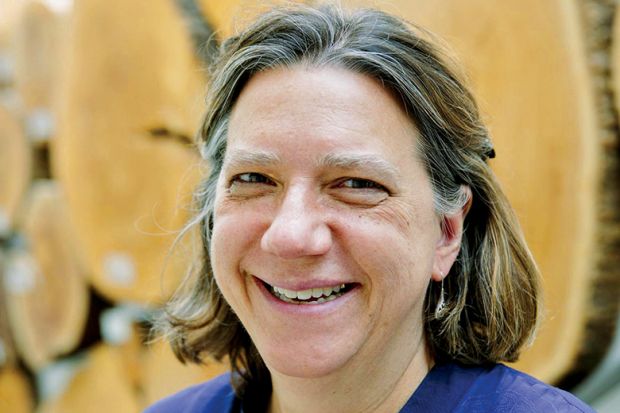Interview with Susan Trumbore

Source: Sven Doering
One of the world’s leading experts on the Earth’s carbon cycle, Susan Trumbore is a director of the Max Planck Institute for Biogeochemistry in Jena, Germany, and a professor at the University of California, Irvine. Her work on carbon dating has allowed her to help prove that the Shroud of Turin was made centuries after Jesus lived and has led her deep into the Amazon rainforest to understand the age of trees. Last year, she was awarded the Balzan Prize for outstanding contributions to her field.
When and where were you born?
I was born in Rochester, New York, in 1959. But we moved out of New York when I was very small, and I grew up in Delaware, as my father was a professor of chemistry and got a job offer to work at the University of Delaware.
So were you destined to become an academic?
I think I realised early that this was a good career. My father was happy in his work, and was the kind of person who would come home and explain to us what his latest results were – he might draw graphs on a napkin.
But you come from a political as well as a scientific family.
My parents were involved in civil rights, fair housing, these kinds of things when I was a child. I worked on Joe Biden’s first two Senate campaigns. My mother was also running for local office. My brother and I, as teenagers, were involved in her campaign and went door to door. Of course, Biden won, and my mother lost. I only met Biden once; he shook my hand and said thank you – it was a very short meeting.
Were you ever tempted to go into politics rather than academia?
Not really, although I think about it more now. There are so few scientists who are in public office, and science is so ignored. I don’t know – I probably wouldn’t get elected, just as my mother didn’t get elected! She was the first woman to run for state representation in Delaware. She had people tell her: “I can’t vote for a woman unless they put a sink in the statehouse so you can wash the dishes, like you’re supposed to do.”
You studied geology as an undergraduate. What made you choose that subject?
I grew up in the time of Earth Day and remember going out and cleaning a creek of litter. Geology seemed to unite the natural world and political concerns. Environmental problems were very severe then – I remember in Los Angeles holding my breath so I wouldn’t have to breathe the air. There were all these things you couldn’t do anything about – we were protesting the Vietnam War – but this was something you could. You could go out and clean up your area.
Early on in your career, you were on one of several teams of scientists that carbon dated the Shroud of Turin to the medieval period, not the time of Jesus. What reaction did you get to that finding?
It was fully accepted by the papal scientists. Popes since the radiocarbon dating refer to the shroud as a “distinguished relic” or an “icon”. But I felt like it was the least important sample that I ever measured. Who was it going to convince? People who have faith in something are not going to be swayed by evidence. When our publication came out, there was a letter from a physicist which said: “Well, we don’t know what the neutron flux is during a resurrection.” We weren’t going to convince anybody who didn’t want to be convinced.
What is the carbon cycle and why is it important?
The carbon cycle is the natural transfer and transformation of carbon between the atmosphere, the biosphere and the ocean. It’s important because when we are burning fossil fuels and putting carbon dioxide in the atmosphere, we’re adding to that natural cycle. The human fluxes are 10, 20 times less than the natural fluxes, this back and forth between the ocean and land. When we increase the carbon dioxide in the atmosphere, we are accelerating the processes of uptake – for example, with higher carbon dioxide levels, more will dissolve in the ocean. For land systems, it can take some time before the processes of release can catch up to increased carbon uptake. In the meantime, there is a sink of carbon on land.
Most people are aware that as the Earth warms, there could be damaging feedback loops that exacerbate climate change – like the Amazon burning. But will climate change turn anything into an unexpected carbon sink?
The main one people talk about is that as you increase carbon dioxide in the atmosphere, plants’ rate of photosynthesis increases with CO2. And there’s some evidence that productivity has increased in forests. Certainly, a lot of carbon that’s being taken up now is in regrowing forests that were cut previously, in the last century.
A big part of your work is carbon dating trees in the Amazon. What’s special about being there?
Every time you go for a walk in a tropical forest, you see something you’ve never seen before. It might be a mushroom that has this colour and shape. If you spend a night in a tropical forest with your headlamp, you see insects you’d never imagine could exist.
And how often do you go?
Not at all now! But normally I would go three times a year. But I have to say, as I’ve gotten older, I’m more sending people into the field than going there myself. But I would prefer to spend time there. I would give up lab work, but I won’t give up fieldwork.



